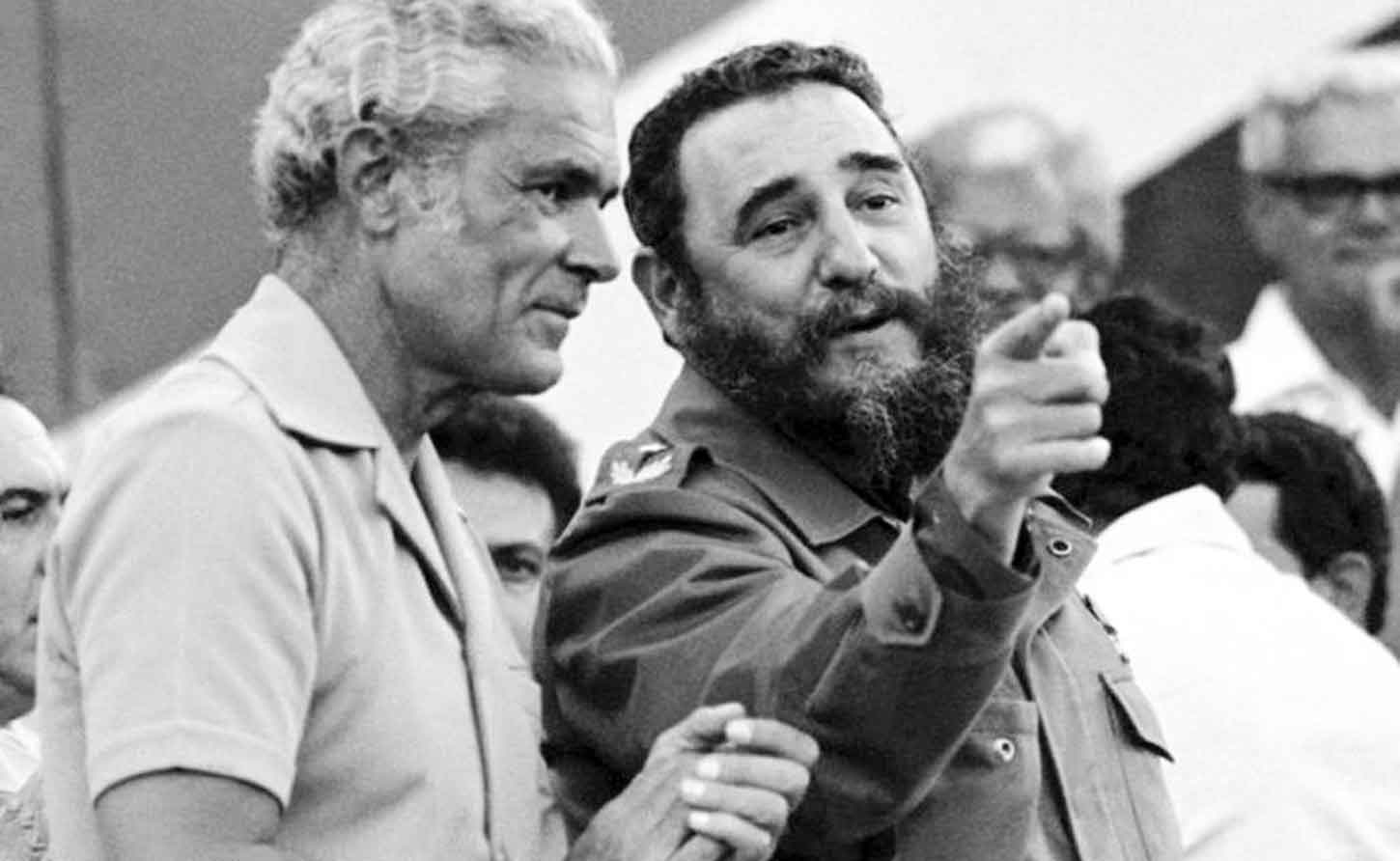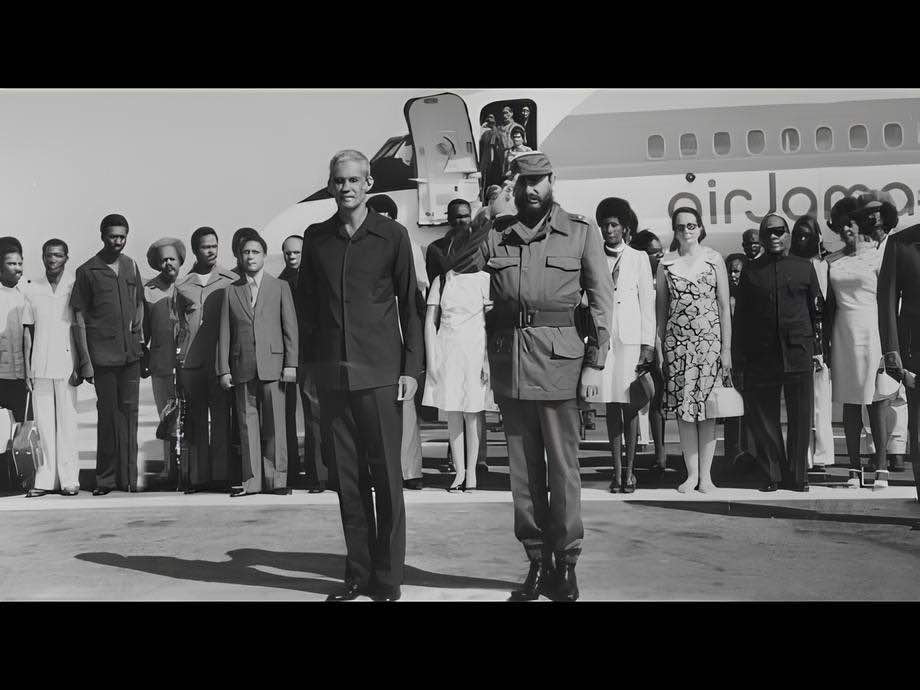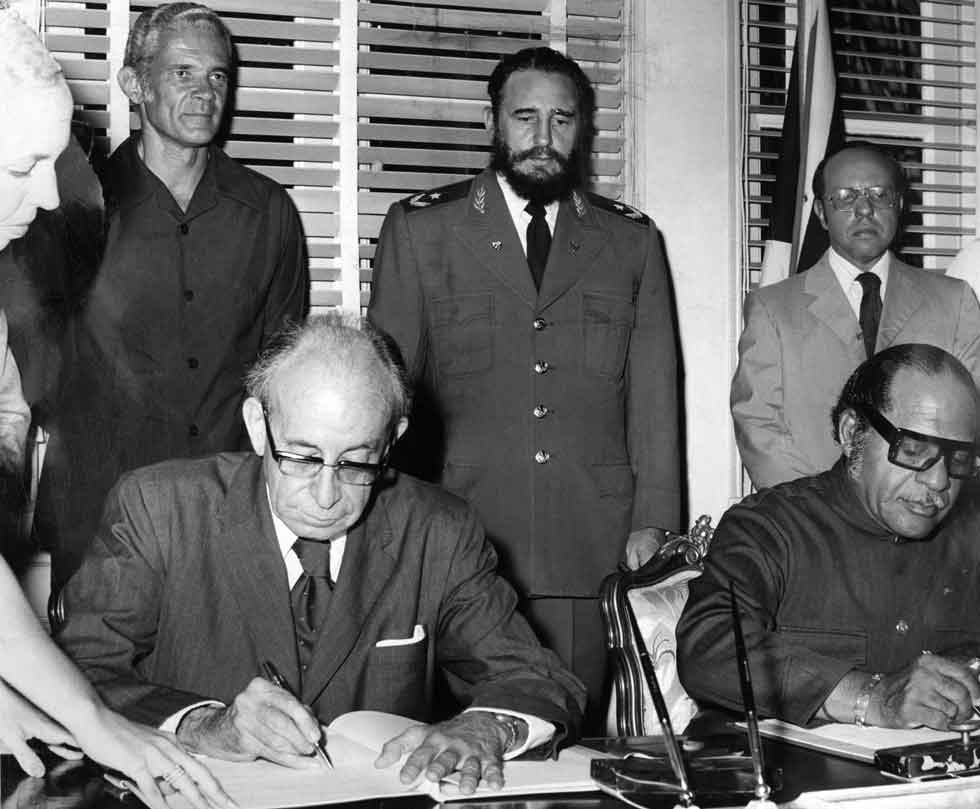JAMAICA | Michael Manley's Courageous 1975 Visit to Cuba Forging a Medical Partnership That Still Saves Lives 50 Years Later

MONTEGO BAY, Jamaica July 14, 2025 - Fifty years ago this month, Prime Minister Michael Manley's historic visit to Cuba launched one of the Caribbean's most enduring and impactful partnerships, directly resulting in the training of hundreds of Jamaican doctors who now form the backbone of the island's healthcare system.
On July 9, 1975, in the frigid depths of the Cold War, Prime Minister Michael Manley, accompanied by his wife Beverly stepped off Air Jamaica Flight 35 at José Martí International Airport in Havana, extending his hand to Fidel Castro in what would become one of the most consequential handshakes in Caribbean history.
The bear hug that followed between the two leaders symbolized more than diplomatic courtesy—it marked the beginning of a partnership that would fundamentally reshape Jamaica's approach to healthcare and education.
A Decision That Defied the Winds of War
Manley's five-day visit came at a time when the world was sharply divided between East and West, capitalism and communism. The Jamaica Labour Party (JLP) opposition condemned the trip, echoing broader international concerns about Jamaica's drift toward socialist policies.
The United States, already wary of Manley's democratic socialist agenda, watched nervously as their Caribbean neighbor embraced Castro's Cuba despite the ongoing American embargo.
But Manley, whose government had proclaimed democratic socialism just months earlier, saw in Cuba something that transcended ideological boundaries: a Caribbean nation that had achieved remarkable progress in health and education despite limited resources. Where critics saw dangerous communist influence, Manley envisioned a blueprint for Caribbean self-reliance and development.
Seeds of Collaboration Take Root

These documents established a joint Jamaican-Cuban commission that would become the foundation for decades of collaboration.
The agreements were more than diplomatic pleasantries. They represented a practical recognition that small island states could support each other's development through shared expertise and resources.
Cuba, having invested heavily in medical education since the revolution, offered Jamaica access to training opportunities that would prove transformational.
The Medical Revolution Begins
What emerged from those 1975 agreements was nothing short of a medical revolution for Jamaica. Beginning in 1976, just one year after Manley's visit, Jamaica launched its medical cooperation program with Cuba.
The initiative started modestly but would grow to become one of the most successful examples of South-South cooperation in the hemisphere.
The program's impact has been profound and measurable. Over nearly five decades, hundreds of young Jamaicans have traveled to Cuba to train as medical doctors, nurses technicians, pharmacists returning home with skills that have strengthened Jamaica's healthcare infrastructure.
These Cuban-trained medical professionals now work throughout Jamaica's public health system, bringing not only medical expertise but also a philosophy of community-centered care that emphasizes prevention and accessibility.
In fact, at present, there is a team of some twenty Cuban eye care specialists located at the St. Josephs Hospital in Kingston, who conducted nearly 6,000 consultations and performing an average of 20 surgeries daily, giving hope and sight to Jamaicans who normally would not have been able to afford the luxury of specialist eye care.
Since it was first established in 2009 to provide comprehensive ophthalmological services to the Jamaican population the Jamaica-Cuba Eye Care programme has screened over 40,000 patients, conducted 25,000 surgeries, and prevented blindness in 17,000 individuals, demonstrating the profound impact of Cuban-Jamaican cooperation on the lives of many.
Beyond Medicine: A Partnership That Endures

Perhaps nowhere is this partnership more visible than in the schools and institutions that Cuba gifted to Jamaica. The crown jewel of this educational cooperation is the GC Foster College, donated by Cuba to Jamaica in the 1970s.
This institution has become the cornerstone of Jamaica's athletic excellence, responsible for training many of the island's outstanding athletes and coaches who have dominated international competitions. Prime Minister Portia Simpson Miller has publicly credited Cuba with assisting Jamaica to become a world leader in athletics—a testament to the far-reaching impact of that original 1975 partnership.
Equally significant is the Fidel Castro Campus of the Anchovy High School, built by the Cubans and bearing the unique distinction of being the only educational institution in the world to carry Fidel Castro's name. This school stands as a lasting monument to the educational cooperation that grew from Manley's historic visit.
The educational dimension has been particularly significant beyond these institutional gifts. The partnership has provided Jamaican students with opportunities to study in Cuba across various disciplines, often free of charge.
This educational exchange has created a cadre of professionals who bring diverse skills and perspectives back to Jamaica, while the Cuban-built schools continue to nurture new generations of Jamaican talent.
Political Winds and Enduring Partnerships
The relationship faced its greatest test in 1980 when Edward Seaga's JLP government came to power, promptly declaring the Cuban ambassador HE Ulises Estrada, persona non grata and severing diplomatic ties. For nearly a decade, official relations remained frozen, reflecting the broader geopolitical tensions of the Reagan era.
However, when Manley returned to power in 1989, diplomatic relations were quickly restored. Tellingly, even during the period of official estrangement, many of the practical cooperation programs continued through multilateral channels, demonstrating the deep roots that the partnership had developed.
A Legacy Written in Lives Saved
Today, as Jamaica grapples with healthcare challenges ranging from chronic diseases to pandemic preparedness, the wisdom of Manley's 1975 initiative becomes even clearer. Cuban-trained doctors serve in rural clinics and urban hospitals across Jamaica, often working in areas where recruitment remains challenging.
Their training in community medicine and preventive care aligns with Jamaica's efforts to strengthen primary healthcare delivery.
The program's resilience was dramatically demonstrated during the COVID-19 pandemic, when Cuba sent 140 healthcare professionals to assist Jamaica's response efforts. This rapid deployment of medical expertise—arriving within weeks of Jamaica's request—illustrated how the foundations laid fifty years ago continue to provide tangible benefits in times of crisis.
Lessons for a New Generation
As Caribbean leaders today speak of regional integration and South-South cooperation, Manley's 1975 Cuba visit offers instructive lessons. The partnership succeeded because it was built on mutual respect, practical benefits, and long-term thinking. Rather than being driven purely by ideology, it focused on concrete areas where cooperation could yield measurable improvements in people's lives.
The medical cooperation program has weathered changes of government in both countries, economic crises, and shifting international dynamics. Its durability reflects the fundamental wisdom of Manley's approach: that small nations can achieve more by working together than by remaining isolated or dependent solely on larger powers.
A Continuing Partnership
Five decades after Manley's historic handshake with Castro, the Jamaica-Cuba partnership continues to evolve. Recent years have seen the program expand to include specialized medical training, research collaboration, and technology transfer. Cuba continues to offer scholarships to Jamaican students, while Jamaica has become a voice for Cuba in international forums.
The partnership faces new challenges, including pressure from changed geopolitical circumstances and the need to adapt to evolving healthcare demands. However, its track record of practical benefits and institutional resilience suggests that the foundations laid in July 1975 will continue to support cooperation for years to come.
The Courage to Choose Friendship
Fifty years later, Michael Manley's decision to visit Cuba stands as a testament to the power of courageous leadership. In an era when the world seemed divided into irreconcilable camps, Manley chose to see beyond ideological barriers to the practical possibilities for cooperation. His willingness to withstand criticism and pursue partnership based on mutual benefit created lasting value for Jamaica.
The hundreds of Cuban-trained doctors now serving in Jamaica's healthcare system represent the most tangible legacy of that historic visit. Each diagnosis made, each life saved, each community served bears witness to the wisdom of a leader who dared to choose friendship over fear, cooperation over isolation.
As Jamaica continues to face healthcare challenges in the 21st century, the partnership forged by Manley's 1975 visit remains not just a diplomatic success, but a practical lifeline—one that continues to strengthen Jamaica's capacity to care for its people and build a more resilient future.
This month marks the 50th anniversary of Prime Minister Michael Manley's historic visit to Cuba, a diplomatic milestone that launched one of the Caribbean's most enduring partnerships in health, education, and development cooperation.
-30-

 En
En  Ar
Ar